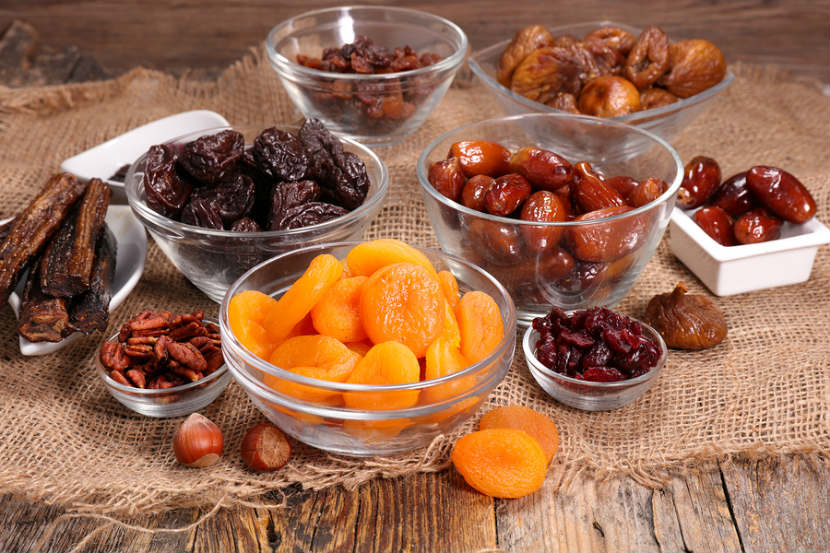
Dried fruit has been available for thousands of years in the Mediterranean and Middle East. Dates are one of the earliest dried fruits that were eaten.
Dried fruit is made by taking the water out of the fruit by sun drying or using a special machine called a dehydrator. Since the water is removed during drying, this also means that the natural sugars in the fruit are concentrated.
You can add some sweetness to your day by enjoying dried fruits. Popular dried fruits include raisins, dates, prunes (dried plums), figs, apricots and peaches. Fruits such as dried mango, pineapple and berries are also available, but these tend to be dried with added sugar.
Nutritional profile of dried fruit
-
One Food Guide serving of dried fruit is ¼ cup (60 mL).
-
Dried fruits are as part of the Vegetables and Fruit food group.
-
Dried fruits can be a source of antioxidants in the diet. Dried apricots and peaches are also important sources of carotenoids, which your body turns into vitamin A.
-
Prunes, raisins and apricots also contain iron.
-
Many dried fruits are also a source of fibre. Take a look at how much fibre there is in ¼ cup of these dried fruits:
|
Dried Fruit
|
Fibre (g)
|
|
Raisins
|
2.5
|
|
Dried apricots
|
2.9
|
|
Prunes
|
3.1
|
|
Dried figs
|
3.7
|
|
Dates
|
8.0
|
Buy dried fruit at it's best
-
Buy dried fruit from a bulk food store to save money.
-
Buy dried fruits without added sugar. Check the ingredient list to see whether or not sugar has been added.
Tips for storing dried fruit
-
Store dried fruits in an airtight container to keep them fresh.
-
Dried fruit can be stored tightly wrapped at room temperature for several months. Store in a cool, dry place like a cupboard.
-
For prolonged storage (up to a year), they should be refrigerated in a tightly sealed plastic bag.
5 Things to Do with Dried Fruit
Raisins
-
Bake apples with raisins and walnuts.
-
Make homemade trail mix with raisins, high fibre cereal and unsalted almonds.
-
Sprinkle raisins onto a salad.
-
Add as a topping to oatmeal.
Dried Apricot
-
Top high fibre cereal with dried apricots and almonds.
-
Layer a yogurt parfait with chopped dried apricots.
-
Add dried apricots to stews.
Prunes
-
Toss chopped prunes into a stir-fry dish.
-
Add prunes to curried chicken.
-
Pureed prunes can also be used to replace half the amount of fat used in baking.
Dried figs
-
After dinner, enjoy a serving of fresh fruit and dried figs.
-
Add dried figs to a stir-fry dish.
-
Layer chopped dried figs onto pear slices. Top with crumbled blue cheese.
Dates
-
Add to batters and doughs for quick breads and muffins.
-
Slice dates lengthwise and fill them with peanut, almond or soy butter.
-
Cook up rice with green lentils, dates and raisins.
Recipes
Soft Oatmeal Raisin Cookies
Protein Bars
You may also be interested in:
All About Frozen Fruit
All About Frozen Vegetables
All About Sweet Potatoes
Last Update – November 28, 2017